Stem Cell Training Signs Agreement to Provide Onsite Regenerative Medicine Training Worldwide
Global Stem Cells Group affiliate Stem Cell Training announces an agreement to provide its Onsite Regenerative Medicine Training at four medical practices in the U.S. and abroad.
MIAMI, April 19, 2018—Stem Cell Training, Inc., an affiliate of Global Stem Cells Group, has signed an agreement to provide its Onsite Regenerative Medicine Training. tailored to meet each individual practice’s requirements. at four medical practices in the U.S. and abroad.
The first onsite training program took place in Arizona earlier this month. The second was held at a private practice in Tampa, Florida April 19 and 20th. The third onsite training will be held at Dream Health & Beauty, a California aesthetics practice April 10-11, 2018, and the fourth onsite training will take place at Livali Pharmaceuticals, United Arab Emirates May 7-8, 2018.
Onsite Regenerative Medicine Training provides private medical practices with an opportunity to take advantage of Stem Cell Training’s highly qualified instructors and protocols to tailor stem cell training to their team’s individual needs. Onsite Training brings the coursework to individual facilities anywhere in the world for personalized, hands-on training in the latest stem cell procedures and protocols.
Participating medical practices receive the following benefits:
- Stem Cell Training’s state-of-the-art regenerative medicine training sessions brought to the facility, saving practices time and money.
- Access to SCT’s online resources, personalized theoretical information, and hands-on training as well as ongoing support for each clinical practice.
- Stem Cell applications and protocols presented to each practice team by an SCT faculty member with extensive experience in laboratory and clinical practice.
- The opportunity to offset registration fees by using the practice’s eligible patients to receive stem cell treatment during the workshop.
Onsite Stem Cell Training program specifications:
- The OSCT team of professionals delivers and sets up all necessary equipment and supplies for the training session to take place and leaves the participating practice team fully qualified to take on its own stem cell treatment practice.
- The OSCT course takes a highly visual and interactive approach, utilizing its expert trainers to teach and supervise the hands-on process on live patients and using different protocols for the extraction, isolation, and application of PRP, adipose, and bone marrow stem cells.
- OSCT provides access to high-resolution, step-by-step videos of procedures for participating practice teams’ future use and reference as well as access to ongoing online and telephone support for clinical and equipment inquiries or concerns.
Stem Cell Training’s Onsite Regenerative Medicine training is fully customized to address specific client needs and medical practice focus. The OSCT team helps physicians and their teams set up their medical facilities to become successful regenerative medicine practices.
To learn more about Stem Cell Training’s Onsite Regenerative Medicine Training, visit the Stem Cell Training Onsite Training website, email info@stemcellsgroup.com or call +1 305 560 5337.
About Stem Cell Training, Inc.: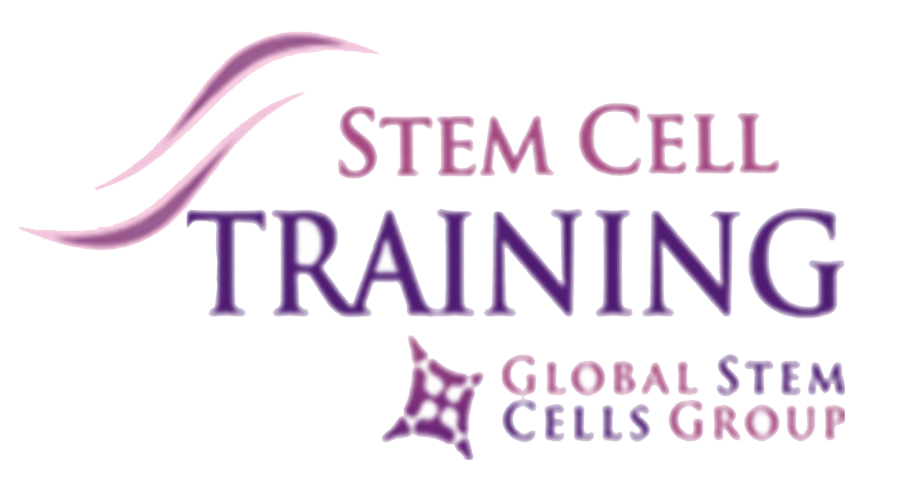 Stem Cell Training, Inc. is a multi-disciplinary company offering coursework and training in 35 cities worldwide. The coursework offered focuses on minimally invasive techniques for harvesting stem cells from adipose tissue, bone marrow, and platelet-rich plasma. By equipping physicians with these techniques, the goal is to enable them to return to their practices, better able to apply these techniques in patient treatments.
Stem Cell Training, Inc. is a multi-disciplinary company offering coursework and training in 35 cities worldwide. The coursework offered focuses on minimally invasive techniques for harvesting stem cells from adipose tissue, bone marrow, and platelet-rich plasma. By equipping physicians with these techniques, the goal is to enable them to return to their practices, better able to apply these techniques in patient treatments.
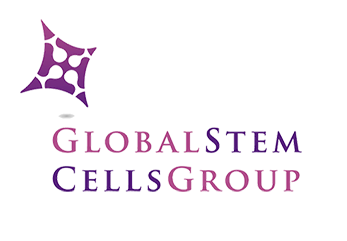
About Global Stem Cells Group:
Global Stem Cells Group (GSCG) is a worldwide network that combines seven major medical corporations, each focused on furthering scientific and technological advancements to lead cutting-edge stem cell development, treatments, and training. The united efforts of GSCG’s affiliate companies provide medical practitioners with a one-stop hub for stem cell solutions that adhere to the highest medical standards.
Global stem cell’s mission is to be the largest recognized stem cell and regenerative medicine network in the world.
online stem cell training
- Published in Press Releases
ISSCA to Host Stem Cell Training Certification Course August 25-26, 2018 in Buenos Aires, Argentina
ISSCA will conduct the next hands-on regenerative medicine certification training course for physicians in Buenos Aires, Argentina, August 25-26. 2018.
MIAMI, April 19, 2018—Following the success of its stem cell training course in Buenos Aires April 6-7, the International Society for Stem Cell Application (ISSCA) has announced plans to host the next hands-on regenerative medicine certification training course for physicians in Buenos Aires August 25-26, 2018.
Eight physicians participated in the April training course, earning certification for harvesting and implanting adipose and bone marrow stem cells in a clinical setting to treat a variety of diseases and conditions including arthritis and osteoarthritis.
Participants learn while they conduct regenerative medicine protocols on live patients under the direction of stem cell training experts. Skills learned in the training course can be used in the physician’s practice for medical and aesthetic treatments and help physicians looking for career advancement opportunities.
Argentinian sports medicine specialist, Damian Ariel Siano M.D., spoke about the benefits of stem cell certification during the training session.
“Now I can offer all my patients a non-surgical option that allows them to avoid surgery for procedures like knee and hip replacement,” Siano says. “For professional athletes, this procedure provides faster recovery and less downtime following the procedure.”
The course also provides participating physicians with access to ISSCA’s online stem cell training course to review all content and procedures introduced during the two-day clinical training course, as well as patient forms and guidelines, procedures, informed consent forms, didactic lectures, training booklets, and more.
The ISSCA’s regenerative medicine protocols training course was developed for physicians and high-level practitioners to learn techniques in harvesting and reintegrating stem cells derived from patients’ adipose tissue and bone marrow.
Stem cell therapies continue to revolutionize the medical industry and help improve the quality of life for patients suffering from sports injuries, age-related conditions, and other chronic ailments.
The August 25-26. 2018 training course will be held at the Medicine Faculty of Universidad de Buenos Aires.
Seating for this training course is limited. Register today to participate by visiting the Stem Cell Training Buenos Aires website, email info@stemcellsgroup.com, or call 305-560-5337.
About ISSCA:
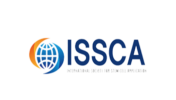 The International Society for Stem Cell Application (ISSCA) is a multidisciplinary community of scientists and physicians, all of whom aspire to treat diseases and lessen human suffering through advances in science, technology and the practice of regenerative medicine. ISSCA serves its members through advancements made to the specialty of regenerative medicine.
The International Society for Stem Cell Application (ISSCA) is a multidisciplinary community of scientists and physicians, all of whom aspire to treat diseases and lessen human suffering through advances in science, technology and the practice of regenerative medicine. ISSCA serves its members through advancements made to the specialty of regenerative medicine.
The ISSCA’s vision is to take a leadership position in promoting excellence and setting standards in the regenerative medicine fields of publication, research, education, training, and certification.
As a medical specialty, regenerative medicine standards and certifications are essential, which is why ISSCA offers certification training in cities all over the world. The goal is to encourage more physicians to practice regenerative medicine and make it available to benefit patients both nationally and globally. Incorporated under the Republic of Korea as a non-profit entity, the ISSCA is focused on promoting excellence and standards in the field of regenerative medicine.
Stem cell training certification Buenos Aires
- Published in Press Releases
Platelet-Rich Plasma Injections: Protocol Guide
Almost all sports medicine doctors would agree that there’s no harm in trying Platelet Rich Plasma Injections (PRP Injections) for their patients. After all, there are hundreds of thousands of cases of positive results. All it needs is research to prove it’s worth. Currently there are many independent researches going on from private funding like the one conducted by Dr. Kimberly G. Harmon M.D., director of the Primary Care Sports Medicine fellowship at University of Washington. She just recently received a gift to support her research from UW alumni who I’m guessing firmly believes in Platelet-Rich Plasma (PRP).
While the process of extracting PRP is fairly simple — there are many variants as long as platelets are above baseline levels with at least seven growth factors — many physician are still unsure about what they can and can’t do when it comes to this marvelous procedure. So today I want to take the time to shine light on the fine print.
Platelet-Rich Plasma Injections Protocol
PRP: Protocols, Technique and Safety Endorsements
Protocol/Technique
Usually, the procedure requires the physician/surgeon and an assistant or two to help with the preparation of graft, the maintenance of sterile technique and saving the ultrasound images (if relevant).
Pre-Procedure Considerations
There should always be a specific indication associated with a physical exam with confirmed imaging studies such as an ultrasound, Cat Scan, or an MRI before treatment.
Proper patient education and a discussion must be had with the patient as well as a signed informed consent prior to the procedure.
Contraindications reviewed prior to procedure.
Graft Preparation
The patient is to positioned in a comfortable seated or reclining position.
Sterile single needles and syringes must be used with proper handling and disposal.
Using an aseptic procedure, the proper amount of blood is then drawn from the vein for the PRP procedure.
If the blood cannot be obtained from the site the first, time a new site must be used to prevent early activation.
Using a sterile technique, transfer the tube of venous blood to the centrifuge. Platelet Rich Plasma should be acquired using a separating device created for autologous blood. Preference is always given to a closed system that will prevent exposure of the blood and its cellular modules to the open air, and permits minimal use of the tissue.
Image Guidance PRP Therapy
Real time imaging guidance using ultrasound CT, or fluoroscopy should always be used when performing a PRP injection.
If ultrasound is going to be used, the subsequent considerations need to be decided on in advance: For lengthy procedures, PRP injections near the spine and intra-articular injections sterile gel is recommended.
Always use sterile probe covers. Cleansing the probe before and after the PRP procedures and observance to sterile technique is sufficient.
Guided images and ineradicable markings of the site of the probe position and the needle entry always needs to be made before cleaning the skin where the probe and needle will be inserted.
Always apply a bandage or a dressing after the procedure to protect the entry site from germs.
Post-Injection
The patient should be monitored for any post PRP procedure complications such as vaso-vagal.
The patients should be given their post procedure directions and precautions and any questions should be answered before they leave, they should also have emergency contact information.
Patients should also be instructed about the immobilization and any post procedure activity that is allowed and/or not allowed.
Post PRP procedure pain prescriptions need to be given to the patient before discharge and any questions they may have about the medication(s) should be answered at this time. The patient also needs to be instructed to avoid NSAIDs till they have healed, are pain free, has full function has returned to the area being treated (or at least to the limited area being treated.
Per OSHA guidelines contaminated areas must be disinfected, before the next patient uses the room (area.)
The PRP procedure must be documented in detail, which includes a procedure note that contains the following information: date, pre and post procedure diagnosis, name of the procedure, physician/surgeon(s), any assistants, whether or not anesthesia was used, and if so what type, short-term indication of the procedure, a description of the graft preparation, a description of the procedure that includes any/all guidance and instruments used.
Platelet-Rich Plasma Injections Protocol
Follow-up
Patients are normally re-examined in 2-6 weeks after the PRP procedure to follow-up on pain, use, the injection site and to discuss any concerns and any future course of action.
The patient response of the treatment should be recorded using authenticated outcome measures.
Any complications responses and all other relevant information should be logged into in the ICMS tracking system.
The consideration for another PRP injection should be the center of the discussion and the patient will be able to make a decision based on the outcome.
Safety
With every medical procedure universal precautions must be used including before, during and after the procedure.
Risk of infection – PRP is antimicrobial and provides effective protection against most bacterial infections except for Klebsiella, Pseudomonas, and Enterococcus.
With the graft being made entirely out of autologous it basically eliminates the apprehension for the transmission of disease unless the graft became contaminated.
Risks to Patient from the Procedure
Infection
Bleeding
Nerve damage
Pain
Lack of result
Loss of limb and death are very rare but possible.
Platelet Rich Plasma: Indications
Musculoskeletal complaints, require a complete history and exam to find a diagnosis. Often times, diagnostic studies may be needed and reviewed to understand why prior treatments failed. PRP is usually considered an optional treatment for chronic and subacute conditions. Commonly, healing slows down or stops all together at the 6-12 weeks’ period following an acute or traumatic injury. If the patient has not had any improvement for over the first six weeks, it’s probable the healing period has stopped.
Platelet-Rich Plasma Injections Protocol
Platelet Rich Plasma: Contraindications
Septicemia
Platelet dysfunction syndrome
Localized infection at the procedure site
Hemodynamic instability
Critical thrombocytopenia
Patient not willing to take the risks involved with the procedure
Relative Contraindications:
Regular use of NSAIDs within 48 hours of the PRP procedure
HGB of < 10 g/dl
Platelet count of < 105/ul
Systemic use of corticosteroids within 2 weeks
Recent illness or fever
Cancer – particularly hematopoietic or of the bone
HGB < 10 g/dl • Platelet count < 105/ul
Corticosteroid injection at treatment site within 1 month
Tobacco use
- Published in Corporate News / Blog
Platelet-Rich Plasma For Breast Augmentation: How it works
“You start out happy that you have no hips or boobs. All of a sudden you get them, and it feels sloppy. Then just when you start liking them, they start drooping.”
Cindy Crawford
Just like men associate (some of) their masculinity with the shape and size of their muscles, women associate (some of) their femininity with the shape and size of their breasts. However, unlike the muscles, exercise won’t be of much help for augmenting the size of breasts.
Fortunately, we have an array of procedures to the rescue. And today, we’re going to take a look at everything that Platelet-Rich Plasma can do for breast augmentation.
Platelet-Rich Plasma For Breast Augmentation
PRP & Breasts: The Incorrect Perception
Currently the traditional breast augmentation procedures like breast implant surgery and fat grafting are still the most effective methods. However, the general public do talk about Platelet-Rich Plasma for breast augmentation. And often times, they have a wrong perception of it. Here’s their typical conversation with a dermatologist goes.
Patient:”Hey, I heard about this thing called PRP, and I was told it’s just a couple of injections with stuff drawn from our own blood.”
Doctor: “Yeah, they are really good.”
Patient: “Really? You think so? I also heard they’re good for breast augmentation. Can you do it for me?”
This follows by the doctor slapping on their forehead. Then the doctor patiently explains how PRP is a healing tool and not an implant tool.
Platelet-Rich Plasma For Breast Augmentation
How Platelet-Rich Plasma For Breast Augmentation Works
Here are two ways PRP is used for breast procedures.
- Fat Transfer & Platelet Rich Plasma For Breast Lift
Fat transfer is the process of taking unwanted body fat (liposuction procedure) from other parts of the body and processing it before injecting it to upper part of the breast and in the cleavage area. This is immediate enhancement. And since it’s immediate, the sudden expansion of the breast can cause blood vessels to be blocked causing some parts of the breasts or the nipples to lose sensitivity. Sometimes it can even cause the skin at those areas to go haywire.
So the best way to avoid that is to make sure enough collagen and growth factors are supplied, well in excess of the area’s needs. That’s why it makes sense to combine the Fat Transfer procedure with Platelet-Rich Plasma. In this combination, the doctor adds PRP (Platelet Rich Plasma) derived from the patient’s own blood, to the fat when processing the fat, which includes many blood-derived growth factors and tissues containing collagen for skin rejuvenation. The end-product is then injected like a typical PRP Injection. The result is firmer breasts with not just a change in size, but also changes in skin texture and shape of the breast. And there’s no worry of losing sensitivity. Some call the entire procedure as Platelet-Rich Plasma Facelift. Results generally last from 9-18 months.
This great procedure has boosted the confidence levels of thousands of women who wanted to overcome their unnatural shaping and aging of breasts. However, even though it works for all kind of breast sizes, it’s not recommended for women with:
Extreme Loss of Volume
Excessive Sagging
Previous Breast Implants
- Only Platelet Rich Plasma For Breast Rejuvenation
This second procedure is purely PRP for rejuvenation purposes. It’s for women who’re happy with their breast size but would love to rejuvenate the skin for youthful looks, restore fullness for healthy breasts and regain sensitivity in areas where it’s diminished. The procedure is same as any other Platelet-Rich Plasma procedures. It starts with drawing 20ml of patient’s blood, spinning it (twice) in a tabletop centrifuge and then injecting to necessary areas. PRP injection not only enhances the looks, it actually produces new tissues in the area because of all that growth factors resulting in better cleavage and fullness.
So if any of your beautiful, intelligent and man-loving female patients need a little help in augmentation, you can confidently recommend these two Platelet-Rich Plasma procedures for breasts. It works.
Additional perks
Some of us in the medical profession hold the opinion that, “if you want to enlarge your breasts, stick with the gold standard. Breast Implants performed by a board certified plastic surgeon.” Artificial implants are anything but gold standard. Natural is the new gold. Besides, to implant artificial stuff you need to cut up the breasts. And the scars that results can take time to heal. Plus, implants may need to be replaced sometime after 10 or 20 years.
“It wasn’t just her beauty. It was the attitude in her smile, the tilt of her head, and the loving look in her eyes when she caught me sneaking a peek down her shirt.”
John L. Monk, Kick
- Published in Corporate News / Blog
Platelet-Rich Plasma For Melasma — Will It Fade Forever?
For most women, a tiny pimple on the face is enough to ruin their day. Or week. Even the slightest imperfection that may have a 1% chance of getting noticed by others will freak them out. For these women, Melasma is their darkest nightmare. It’s a pretty common issue, a result of exposure to sun, that causes brown patches on the face. Permanent patches, I should add.
If you’re suffering from Melasma, the road to “recovery” usually looks like this.
- You hope that it’ll fade away.
- Your friend suggests you try apple cider vinegar and lemon juice treatment.
- Slightly disappointed.
- You visit a dermatologist who’ll prescribe a bleaching cream (hydroquinone or similar).
- Full-on disappointment.
- You Google the hell out of the topic.
- Overwhelm.
- Concealers and makeup becomes your best friend.
At this point, no one can convince you there is a treatment for getting rid of melasma. Trying more and more treatment only runs the risk of making the condition worse. So what would you do?
Platelet-Rich Plasma For Melasma
What about Platelet-Rich Plasma For Melasma?
According to recent Turkish and Malaysian studies, Platelet-Rich Plasma is showing great promise for melasma. The one good thing about PRP for Melasma is the fact that PRP won’t make the condition worse unlike IPL, fraxel or other treatments. So that’s one of the treatment you can confidently try without worry. It’s like getting a natural facial treatment that has a whole lot of potential benefits even if it didn’t help cure melasma.
PRP injections work by supplying growth factors to reduce the pigmentation. And being an independant treatment with no downtime, it can be done in conjunction with conventional treatments for melasma to add and enhance the effects. There are more than 30 bioactive substances in Platelet-Rich Plasma that has separate roles like increasing skin volume and adding new blood vessels to name a few.
Platelet-Rich Plasma with Microneedling
This is the most common combination for Platelet-Rich Plasma therapy. Here’s a video of Dr. Michael Somenek performing PRP injection on a patient of his immediately after microneedling. The combination is known to have produced results for a lot of varieties of skin pigmentation issues that it’d not be wise for anyone to ignore it for melasma, especially when creams and peels didn’t help. More important is PRP’s ability to stimulate collagen production in the area so it tightens the pores and makes your skin glowing.
Why Platelet-Rich Plasma?
PRP is primarily a healing vehicle. It needs to be injected into the membrane below the skin. The way it works is by supplying the underlying skin membrane with collagen and tenascin stimulated by the transforming growth factors in PRP. These growth factors also promote formation of new blood vessels that in some cases results in disappearance of spider veins.
The released growth factors (mainly platelet derived growth factor (PDGF), epidermal growth factor (EGF), vascular endothelial growth factor (VEGF), fibroblast growth factor (FGF) and transforming growth factor-beta (TGF-ß)) can stimulate proliferation of fibroblast and epidermal cell, and collagen synthesis. In addition, the transforming growth factor-beta (TGF-ß) has been proven to inhibit melanogenesis — or reverse skin pigmentation — the exact opposite effect of exposure to UV-B radiation.
Typically, patients see excellent results with 2-3 PRP injections in the first 3 months. And clinical studies have shown that it will maintain after 6 months.
However, Melasma is known to recur even after successful treatments. So you must take precautions against it by using sunscreen with broad-spectrum protection and an SPF of 30 or higher. And avoid skin care products that are harsh as they can exacerbate melasma.
- Published in Corporate News / Blog
What’s True About Platelet-Rich Plasma For Stretch Marks?
Cindy is a career woman. So when she became pregnant for the first time, she was confused about which aspect of her life had higher priority – her work or taking care of her growing body. Not wanting to drown in that confusion, she kept herself busy with her work all day while snacking every little free time she had. This meant she was putting on a lot of weight, fast. Occasionally, her more experienced sister would remind her to apply Bio Oil on her growing tummy before bed, but she was too exhausted to actually do it. Except maybe for a few nights.
It wasn’t until after she delivered her baby that she realized her folly – her belly now looked like a road map.
What Works For Stretch Marks?
Sure, there are a variety of topical treatments, the ones with cocoa butter are the trend, but they’ll hardly affect severe stretch marks. They perform better when used as preventive measures. Because fully developed stretch marks are rarely skin deep. The stretching occurs on the layer underneath the surface called dermis. And the inability of the surface layer (epidermis) to keep up with the stretching is what’s causing the appearance of deep roads of stretch marks.
One way to “cure” stretch marks or at least the appearance of stretch marks is to make the skin surrounding the stretch marks a level closer to the stretch mark itself. This can be done by various minimally invasive “scarring” technologies like microdermabrasion, microneedling and CO2 fractional laser.
But You Said Platelet-Rich Plasma For Stretch Marks, Didn’t You?
Yes. But you see, platelets can only supply growth factors wherever healing is initiated. So unless healing is initiated or is still ongoing (not in the case of a fully developed stretch mark), the injected Platelet-Rich Plasma may not be able to produce it’s excellent results.
That’s why in forums you can hear a lot of advice from doctors who claim Platelet-Rich Plasma can’t help stretch marks. In fact, that’d be the first thing I’d say if someone asked me.
However, what if we could artificially initiate the healing? Not only in the outer epidermis layer, but also in the underlying dermis layer too? Now, that’s an excellent opportunity to put the growth factors in Platelet-Rich Plasma to good use, wouldn’t you agree?
Platelet-Rich Plasma For Stretch Marks
Actually that’s exactly how hundreds of thousands of happy men and women get rid of their stretch marks, around the world.
Enter PRP Microneedling
PRP microneedling is nothing but swapping Vitamin C that’s used in traditional microneedling with Platelet-Rich Plasma. This is traditionally called Platelet-Rich Plasma facial – due to the fact that you’re essentially spreading blood components over your face. This is a particularly effective treatment for the face. But it can provide even better results for stretch marks (probably the most effective treatment for stretch marks.)
Here’s why this particular combination really works:
- Getting to the root of the situation
With micro-needling, what we’re actually doing is punching some holes on both the outer epidermis layer and the inner dermis layer of the skin. These holes are so micro that it restores back to normal within minutes or hours. However, during the time it’s open a healing response is triggered. The very act of triggering a healing response in the inner dermis layer means there’s going to be some improvement on the stretch marks – as that’s where the source is. That’s probably why doctors recommend micro-needling for stretch marks over any other treatments. The procedure also removes unwanted, half-dead cells from the outer skin causing the stretch marks to appear less deep.
- Accelerated Healing With PRP
PRP’s job is to accelerate the healing response triggered by the micro needles, and it must do so during the time it’s open. So immediately after the micro-needling, a concentrated gel of PRP is applied. And massaged well enough for the platelets to actually seep through the holes. These platelets first stop the micro-bleeding caused by the microneedles and then the growth factors in the platelets trigger the production of a substantial amount of collagen. Now, collagen’s primary role is replacement of dead skin cells. Which means, it’ll replace all the dead, broken and torn skin cells in the entire area. The result is fresh new skin in the areas of the stretch mark causing it to actually shrink in size and look more rejuvenated.
Why Platelet-Rich Plasma?
Platelet-Rich Plasma is a powerful healing component. That’s why it was invented in the first place. In 1987, surgeons found that autologous platelet-rich plasma and red blood cell concentrates diminishes the cost of healing for cardiac surgery — meaning faster, efficient and natural healing for patients. Now, the same force that heals a cardiac surgery also can also cause rejuvenation of our body — whether it’s the skin or any other organ in the body. We’re only beginning to peel layers of healing potential found in Platelet-Rich Plasma. A 2015 chinese study about growth factors in PRP says it can even heal bones. They’re not the only ones. Here’s another study of PRP for bone grafts and they found it helps too.
So it’d be outright foolish to not use such a potent, natural healing agent for skin rejuvenation purposes. And micro-needling seems to be just what Platelet-Rich Plasma needs to exercise its healing powers. It’s much better than stockpiling tons of topical products that might “cure” stretch marks — scar creams, retinoids, and peptides.
Platelet-Rich Plasma For Stretch Marks
The More Earlier The Better
In healing, studies show platelets have much better efficiency when they are introduced right after the wound initiation. The same is the case for stretch marks. As soon as you see those marks, it’s better to head straight to the clinic and get a Platelet-Rich Plasma + Micro-needling session to heal it. The longer you wait, the more harder it gets to wipe them off. So stop experimenting with topical creams – they’re meant to be used as preventive measures.
- Published in Corporate News / Blog
Platelet-Rich Plasma For Bone Healing: Myth or Fact?
Platelet-Rich Plasma has a proven record for healing soft-tissues and other living tissues. But can it actually heal the bones itself?
This could mean PRP, when applied to an affected area whether it’s an elbow joint or knee or back bone area, actually heals everything within it’s reach including the bones. Is that really why PRP actually works?
Let’s examine.
Platelet-Rich Plasma For Bone Healing
Bones are not just lifeless matter attached to living tissues. It’s as much living as the tissues themselves. And just like the tissues, it’s constantly changing too. The old bone cells are broken down and replaced with new ones in a three-part process called bone remodeling the involves resorption (digestion of old bone cells), reversal (new cells are birthed) and formation (new cells turn into fully formed bones).
This process, just like any other biological processes in the body, requires hormones and growth factors. Some of the names include parathyroid hormone (PTH), calcitriol, insulin-like growth factors (IGFs), prostaglandins, tumor growth factor-beta (TGF-beta), bone morphogenetic proteins (BMP), and plain old cytokines. For this discussion we need to remember only one thing: a large cytokines and growth factors are involved in bone remodeling process.
Which means we accelerate the bone remodeling process by supplying these cytokines and growth factors as suggested by studies like this, this, this, this, this and this.
Why Platelet-Rich Plasma?
Autologous Platelet-Rich Plasma (PRP), being completely “whole and natural” can more closely simulate a highly efficient in-vivo situation that anything else out there that are made up of artificial recombinant proteins. In PRP, we are taking advantage of the biological benefits of growth factors whose functions we know as well as those we do not know of yet. From the 15+ factors we know are in PRP including platelet derived growth factor (PDRF), transforming growth factor-beta (TGF-beta), platelet factor 4 (PF4), interleukin 1 (IL-1), platelet-derived angiogenesis factor (PDAF), vascular endothelial growth factor (VEGF), epidermal growth factor (EGF), platelet-derived endothelial growth factor (PDEGF), epithelial cell growth factor (ECGF), insulin-like growth factor (IGF), osteocalcin (Oc), osteonectin (On), fibrinogen (Fg), vitronectin (Vn), fibronectin (Fn) and thrombospontin-1 (TSP-1)… we’re actually supplying a “holistic” set of nutrients for healing that cannot be mimicked by those obtained artificially.
Platelet-Rich Plasma For Bone Healing
Organic Fertilizers For The Body
The PRP difference is like adding chemical fertilizers versus organic fertilizers on plants. Chemical fertilizers are rich in essential nutrients that we know are needed for crops. On the other hand, organic fertilizers supply nutrients not only to the plants but also to the soil, improving the soil structure and tilth, water holding capacity, reduces erosion as well as promote slow and consistent release of nutrients to the plants itself.
Clearly, organic fertilizers are better, aren’t they?
Platelet-Rich Plasma are like organic fertilizers for our body.
Bonus: Strong Antimicrobial Properties
It seems that the Platelet-Rich Plasma’s healing function has synergistic function to anti-microbial properties. A new study confirms that using Platelet-Rich Plasma in surgeries may have the potential to prevent infection and to reduce the need for costly post-operative treatments.
That’s a nice bonus for the organic fertilizer of our bodies. Perhaps, there are more. So why wouldn’t anyone not take advantage of them?
The scope of Platelet-Rich Plasma is growing as the scientific community continues to unearth its inherent properties. PRP is an unignorable, and unavoidable component of healing.
- Published in Corporate News / Blog
Stem Cell Platelet-Rich Plasma: The Best Regenerative Therapy?
To understand why stem cell platelet-rich plasma or co-transplantation of Adipose-derived mesenchymal stem cells and PRP, is such a remarkable idea in regenerative medicine, let’s spend a little time looking at the mechanics of PRP.
Platelet-Rich Plasma’s Role As Repairmen
The one thing that makes Platelet-Rich Plasma a hero in several fields (if not all) of medicine is the fact that the diverse growth factors in it are able to stimulate stem cell proliferation and cell differentiation (the factors that determine effective tissue regeneration and healing) on any part of the body.
These growth factors are abundant in the blood and act as the natural repairmen of tissues.
In the perfect scenario, there’s plenty of blood flow to every part of the body and these “repairmen” are always on-call to address any healing needs that may arise. However, if the injured area has a poor blood supply — especially areas that are constantly move like tendons, ligaments and joints — demand for these repairmen can outgrow supply. Meaning, healing (or regeneration of tissues) is put on hold till further repairmen are available.
The train of Platelet-Rich Plasma then arrives with enough of these repairmen to warrant resumption of healing.
There’s another part of this picture we haven’t talked about so far: stem cells.
As far as Platelet-Rich Plasma and it’s growth factors are concerned, they are mere repairmen. They can’t do the work by themselves. They need the basic raw materials to work with. And that raw material here is the stem cells.
Stem cells are the ones actually being regenerated to form new tissues for healing.
Stem Cells As The Raw Materials For PRP
Stem cells are the only raw materials that PRP works with for regeneration. These are like the fundamental building blocks of all other cells. These cells can be can be guided into becoming specialized cells under the right conditions.
In addition, they can also divide themselves to form new stem cells or new specialized cells.
So for Platelet-Rich Plasma to work well, it needs to be applied to an area with lots of stem cells like the heart, liver, blood vessels etc. Incidentally Platelet-Rich Plasma’s healing properties were first discovered by cardiac surgeons who played with concentrated blood for faster healing of heart after surgery and it showed tremendous promise because stem cells are abundant in heart tissues.
But what if healing is needed in an area where there are not much stem cells?
With the new developments in stem cell technology that can be solved too. Because now we can supply the stem cells to areas where there are less like the joints, ligaments and tendons. For this, scientists usually use “mesenchymal stem cell” or MSCs. These are cells isolated from stroma and can differentiate to form adipocytes, cartilage, bone, tendons, muscle, and skin.
The most easiest way is to harvest it from adipose tissue or fat that we call Adipose-derived mesenchymal stem cells or ADSC.
Stem Cell Platelet-Rich Plasma
Supplying Both PRP And Stem Cells For Regeneration
In regions with hypoxia (poor blood supply) like joints, meniscus tissue, rotator cuff, spinal discs etc the supply of platelets (and therefore growth factors) as well as the stem cells are limited. So what if we supplied both the stem cells and Platelet-Rich Plasma for triggering the regeneration process?
That’s the question these Japanese scientists answered in their research. Here’s another group of scientists who took on the same challenge.
They used Adipose-derived mesenchymal stem cells (ADSC) which is known for their ease of isolation and extensive differentiation potential. These researchers noted that these stem cells often can’t survive in areas of local hypoxia, oxidative stress and inflammation – thereby making them ineffective. However, when Platelet-Rich Plasma (or thrombin-activated PRP) is added to ADSC, it kept them alive for prolonged periods and the growth factors in the Platelet-Rich Plasma triggered cell differentiation and proliferation more easily.
Why This Exact Combination Is The Future
Done this way, both Adipose-derived mesenchymal stem cells (ADSC) and Platelet-Rich Plasma are raw materials for healing that’s already available in plenty in almost every one (there are exceptions of course). That means, for complete healing to take place this combination treatment, still in it’s very primitive stage of development, may have the potential to replace expensive synthetic drugs that carry complex unexplained side effects. The procedure takes our body’s natural healing agents — stem cells from body fat and PRP from blood — and then inject it inside knee or other joints (or other areas where they are insufficient) for regeneration.
Isn’t that like the most wonderful thing ever?
Whether it’s cartilage cell, or a bone cell, or a collagen cell for ligaments and tendons that needs to be healed, all you need is a same-day procedure by a local, but specialized doctor, using the natural ingredients of the body.
I believe this special combo is a huge win for Platelet-Rich Plasma.
The Challenges For Growing Adoption Of This Treatment
We know Platelet-Rich Plasma has safe, yet high-speed recovery potential with it’s multiple growth factors. And it is effective in regenerative healing of cartilage injuries – the most toughest injuries to heal – as well as Osteoarthritis. However the challenges are Platelet Quality. We need to somehow ensure the Platelet-Rich Plasma quality is uniform. Currently it varies from two to several fold above baseline concentration based on donor’s physical condition.
Next we need to identify the exact PRP growth factors that promote ADSC proliferation. Scientists believe growth factors such as basic fibroblast growth factor (bFGF), epidermal growth factor, and platelet-derived growth factor stimulate stem cell proliferation while some growth factors under certain conditions are known to inhibit the process.
The percentage of PRP matters too. 5 percent, 10 percent, 15 percent and 20 percent Platelet-Rich Plasma in ADSC are tested by scientists.
The Only Treatment In Modern Medicine For Cartilage Regeneration
The bottom line is that Stem Cell Platelet-Rich Plasma or ADSC + PRP procedure is the only treatment in modern medicine that has showed cartilage regeneration. So it’s too important to ignore. And it could one of greatest advances that science has brought to the millions of people suffering from serious pain in their joints, knee and spine as well people suffering from all kinds of tendon diseases and injuries.
- Published in Corporate News / Blog
Aesthetic Practice Digital Marketing, Regenerative Medicine Master Classes at Jornadas Mediteraneas
ISSCA to host regenerative medicine symposium during Jornadas Mediteraneas—Mediterranean Days of Therapeutic Confrontations in Medicine and Cosmetic Surgery—in Barcelona.
MIAMI, April 2, 2018—The International Association for Stem Cell Application (ISSCA) has announced plans to host a regenerative medicine symposium during Jornadas Mediteraneas—Mediterranean Days of Therapeutic Confrontations in Medicine and Cosmetic Surgery— in Barcelona, Spain May 13, 2018.
The ISSCA symposium will provide a platform for Global Stem Cells Group to conduct master classes in digital marketing for aesthetic practices and regenerative medicine, conducted by specialists in these fields.
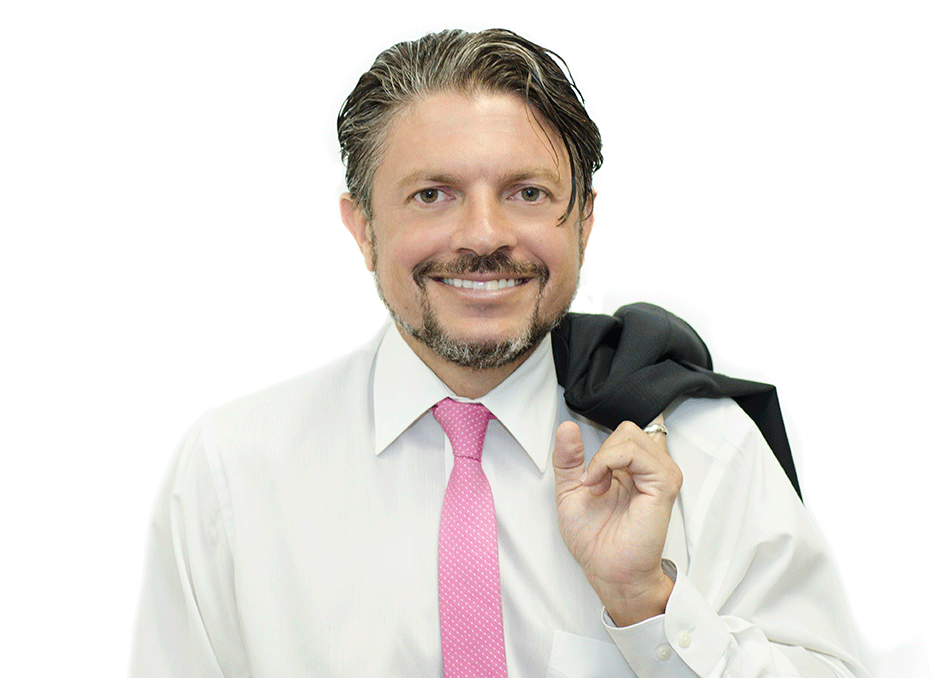
Benito Novas, Global Stem Cells Group CEO
GSCG CEO Benito Novas will conduct a master class in digital marketing for aesthetic physicians. Novas, a global entrepreneur and medical marketing professional in the fields of biotechnology, life sciences, and healthcare development, will share his expertise and the latest marketing tools for managing an aesthetic medicine practice. Topics will include social media strategies for promoting physician practices, and how to design Google and Facebook ads that generate targeted leads and engage new potential patients.
Novas’s class will provide aesthetic medicine professionals with a valuable opportunity to learn about the most effective marketing resources and methods for growing an aesthetic medicine practice and best practices for managing different advertising resources.
In addition, Novas’s class will offer expert tips for using content marketing strategies to build a practice. Following the class, Novas will launch his newest book, “Marketing Digital en su clinica Estetica”(“Digital Marketing in Your Aesthetics Clinic”) as well as his new online course, “Digital Marketing for Aesthetic Physicians.
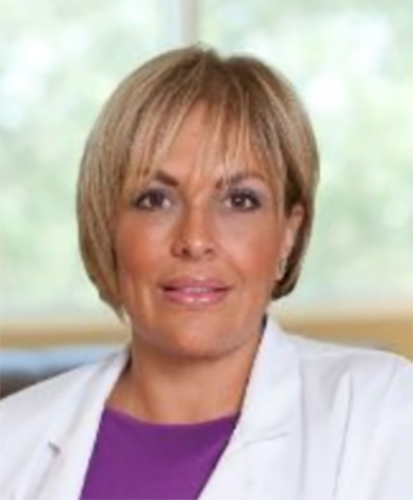
DRA Maritza Novas
The second master class will focus on regenerative medicine and will be split into two sessions, the first of which will be conducted by stem cell specialist DRA Maritza Novas and anti-aging and regenerative medicine specialist Leslie Mesen, M.D.
Novas and Mesen will offer instruction on adult stem cells, which have attracted the attention of scientists and physicians worldwide for their unique biological properties and potential for treating disease, injuries, and medical conditions. Stem cell research is complex and fast-growing, with new developments progressing rapidly.
Novas will share her expertise, experiences, and perspective on a broad range of topics regarding advancements in mesenchymal stem cell (MSC) applications during their transition from bench side to bedside.
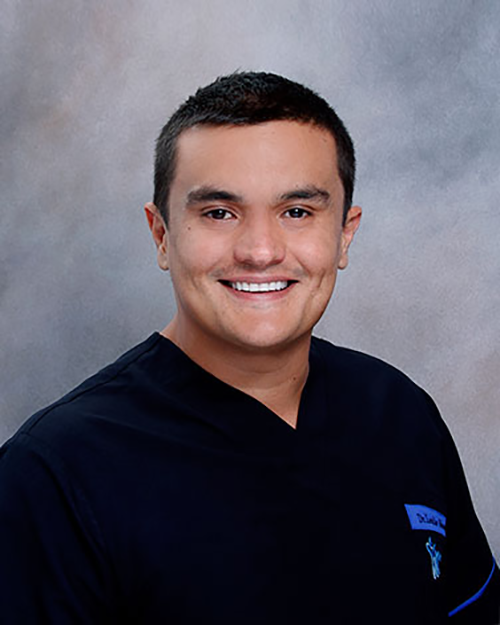
Leslie Mesen, M.D.
The second session will feature Mesen, Medical Director of Stem Cells Costa Rica who is board certified in anti-aging and regenerative medicine by The American Academy of Anti-Aging Medicine, and DRA Mar Vargas, Director of the Lasar Sculpture Medical Clinic in Escazu, Costa Rica, who will present their insights regarding clinical applications of stem cell treatments and share information about their clinical experiences with symposium audience members.
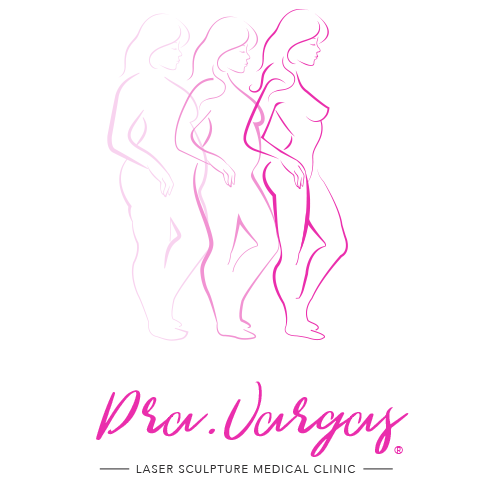
DRA Mar Vargas, Lasar Sculpture Medical Clinic
Sponsored by ISSCA, the symposium will utilize the Jornadas Mediteraneas platform to continue its mission to support a paradigm shift in healthcare from traditional to regenerative medicine in the 21st Century and provide cutting-edge information on developments in all areas of stem cell research.
To learn more about the symposium and digital marketing masterclass and to make a reservation, visit the stemcellconference.org website, email info@stemcellsgroup.com, or call +1305 560 5337.
About ISSCA:
 The International Society for Stem Cell Application (ISSCA) is a multidisciplinary community of scientists and physicians, all of whom aspire to treat diseases and lessen human suffering through advances in science, technology and the practice of regenerative medicine. ISSCA serves its members through advancements made to the specialty of regenerative medicine.
The International Society for Stem Cell Application (ISSCA) is a multidisciplinary community of scientists and physicians, all of whom aspire to treat diseases and lessen human suffering through advances in science, technology and the practice of regenerative medicine. ISSCA serves its members through advancements made to the specialty of regenerative medicine.
The ISSCA’s vision is to take a leadership position in promoting excellence and setting standards in the regenerative medicine fields of publication, research, education, training. and certification.
As a medical specialty, regenerative medicine standards and certifications are essential, which is why ISSCA offers certification training in cities all over the world. The goal is to encourage more physicians to practice regenerative medicine and make it available to benefit patients both nationally and globally. Incorporated under the Republic of Korea as a non-profit entity, the ISSCA is focused on promoting excellence and standards in the field of regenerative medicine.
About Global Stem Cells Group:
Global Stem Cells Group (GSCG) is a worldwide network that combines seven major medical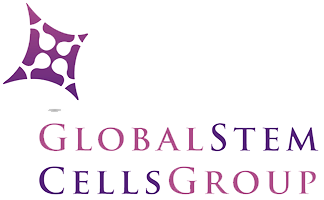 corporations, each focused on furthering scientific and technological advancements to lead cutting-edge stem cell development, treatments, and training. The united efforts of GSCG’s affiliate companies provide medical practitioners with a one-stop hub for stem cell solutions that adhere to the highest medical standards.
corporations, each focused on furthering scientific and technological advancements to lead cutting-edge stem cell development, treatments, and training. The united efforts of GSCG’s affiliate companies provide medical practitioners with a one-stop hub for stem cell solutions that adhere to the highest medical standards.
Global stem cell’s mission is to be the largest recognized stem cell and regenerative medicine network in the world.
Jornadas Mediteraneas master classes
- Published in Press Releases
ISSCA President Deyoung Kim, Ph.D., Announces Regenerative Medicine Symposium in Korea Nov. 24, 2018
ISSCA Founder and President Daeyong Kim, Ph.D., announces plans to host the Regenerative Medicine Cell Therapies Symposium in Seoul, Korea in November.
MIAMI, April 2, 2018—International Association for Stem Cell Application (ISSCA) President Daeyong Kim, Ph.D., has announced plans to host Applications of Cell Therapies in Medicine and Aesthetic Surgery, a regenerative medicine symposium, in Seoul Korea November 24, 2018.
The symposium will be ISSCA’s principal event for 2018, during which the organization will launch its entire 2019 program, including stem cell certification courses for physicians to be held in locations worldwide, as well as the 2019 regenerative medicine symposium agenda.
In 2019, ISSCA plans to expand its activities to Asia by hosting at least one regenerative medicine symposium and four stem cell certification courses during the year. The Korea symposium will be structured as a scientific meeting in which regenerative medicine practitioners share their clinical experience. ISSCA affiliate Global Stem Cells Group, and biomedical and leading lab equipment manufacturer N-Biotek will launch new technology for regenerative medicine practitioners.
The international symposium is part of ISSCA’s mission to support a paradigm shift in healthcare from traditional to regenerative medicine in the 21st Century and provide cutting-edge information on developments in all areas of stem cell research. The Buenos Aires event will host a group of renowned international speakers in the field of stem cell and regenerative medicine, who will offer a day of rigorous scientific discourse aimed at physicians.
Topics of focus at the symposium include:
- Management of aging at the cellular level
- Stem cell therapies in medical aesthetics: the latest methods of harvest and isolation Non-invasive protocols of non-surgical facial and body rejuvenation
- Beyond fillers and toxins
- Combined treatment plans that include surgical methods for the management of advanced aging
- Restoration and assisted hair transplantation with biomaterials and growth factors
- The invaluable role of biological cosmeceutical in the management of aging
- The aging process from the inside out: the role of hormones
- Management of the latest digital marketing tools for recruiting patients in their aesthetic clinics
The symposium will incorporate the biology, medicine, applications, regulations, product development, and commercialization of stem cells. Business opportunities, challenges, and potential strategies for overcoming these challenges will also be addressed.
To learn more about the ISSCA Korea symposium and to make a reservation, visit the stemcellconference.org website, email info@stemcellsgroup.com, or call +1305 560 5337.
About ISSCA:
 The International Society for Stem Cell Application (ISSCA) is a multidisciplinary community of scientists and physicians, all of whom aspire to treat diseases and lessen human suffering through advances in science, technology and the practice of regenerative medicine. ISSCA serves its members through advancements made to the specialty of regenerative medicine.
The International Society for Stem Cell Application (ISSCA) is a multidisciplinary community of scientists and physicians, all of whom aspire to treat diseases and lessen human suffering through advances in science, technology and the practice of regenerative medicine. ISSCA serves its members through advancements made to the specialty of regenerative medicine.
The ISSCA’s vision is to take a leadership position in promoting excellence and setting standards in the regenerative medicine fields of publication, research, education, training. and certification.
As a medical specialty, regenerative medicine standards and certifications are essential, which is why ISSCA offers certification training in cities all over the world. The goal is to encourage more physicians to practice regenerative medicine and make it available to benefit patients both nationally and globally. Incorporated under the Republic of Korea as a non-profit entity, the ISSCA is focused on promoting excellence and standards in the field of regenerative medicine.
ISSCA Korea regenerative medicine symposium
- Published in Press Releases

![online_surgery[1]](https://stemcellcenter.net/wp-content/uploads/2019/11/online_surgery1-460x260_c.jpg)
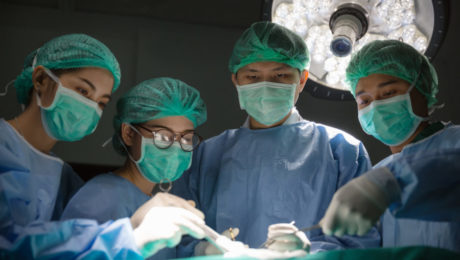
![ehr-1476525_1280[1]](https://stemcellcenter.net/wp-content/uploads/2019/11/ehr-1476525_12801-460x260_c.png)
![bra-3259370_1280[1]](https://stemcellcenter.net/wp-content/uploads/2019/11/bra-3259370_12801-460x260_c.png)
![melasma[1]](https://stemcellcenter.net/wp-content/uploads/2019/11/melasma1-460x260_c.jpg)
![estrias-tratamiento[1]](https://stemcellcenter.net/wp-content/uploads/2019/11/estrias-tratamiento1-460x260_c.jpg)
![anatomy-3003099_1280[1]](https://stemcellcenter.net/wp-content/uploads/2019/11/anatomy-3003099_12801-460x260_c.jpg)
![doctor-2346235_1280[1]](https://stemcellcenter.net/wp-content/uploads/2019/11/doctor-2346235_12801-460x260_c.jpg)
![JM5[1]](https://stemcellcenter.net/wp-content/uploads/2019/11/JM51-460x260_c.png)
![KOREA_SYMPOSIUM_Image2[1]](https://stemcellcenter.net/wp-content/uploads/2019/11/KOREA_SYMPOSIUM_Image21-460x260_c.png)